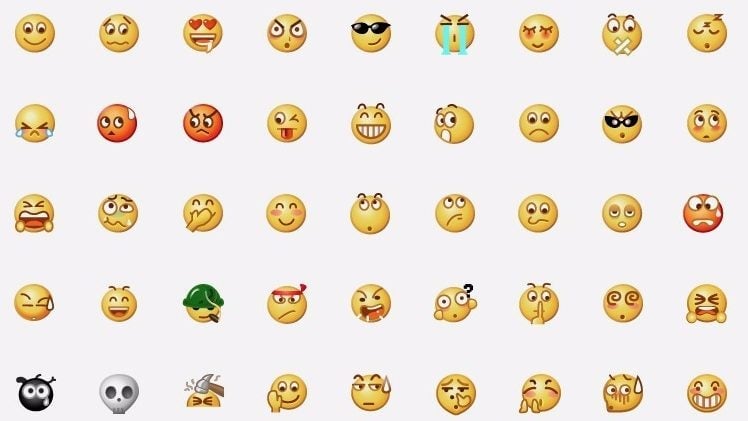Chinese people mean something very different when they send you a smiley emoji
Emoji first emerged in Japan in the 1990s as a way for people to quickly communicate through visual information. They’ve become mainstream around the world thanks in part to the rise of smartphones and social media platforms.


Emoji first emerged in Japan in the 1990s as a way for people to quickly communicate through visual information. They’ve become mainstream around the world thanks in part to the rise of smartphones and social media platforms.
But while emoji are familiar to many, the same symbols can have different meanings in different cultures.
China is a case in point. The country is known for generating creative, peculiar internet memes—ones sometimes deployed to subtly mock authorities. People there have also developed a system for using emoji subversively, so that a smiley face can actually convey contempt.
The Chinese use emoji primarily on the nation’s two biggest social media platforms: Weibo, with its 313 million monthly users, and WeChat, with its 700 million. The emoji keyboards in these services offer symbols and a style different than what you’d find in, say, WhatsApp.
Here’s a quick guide:

Smiley face
On the surface: Happiness.
Below the surface: A despising, mocking, and even obnoxious attitude.
Background: The upper “muscle movements” here could explain why the face is considered less friendly and more hostile. “If you take a closer look at the eyes, the orbicularis oculi (the muscle near that upper eye corner) does not move, and the orbicularis oris (the one near the mouth) tightens, which is a sign of suppressing a smile,” notes An Yong, a user on Zhihu, China’s answer to Quora. The answer has garnered some 16,000 likes (link in Chinese) since last June.

Guidance: Don’t use it as an expression to say you’re happy about something. Maybe use these instead, since the muscle movements seem to be smiling genuinely:. Or use any of these on your iOS device: 😁😄😀 .

Smiley face with a waving hand
On the surface: Goodbye with a smiley face.
Below the surface: “I despise you and really don’t want to talk with you. Please go away.”
Background: Thanks to the smiley face, this is not a simple goodbye, but rather a mocking expression used to respond negatively to whatever one objects to.
Guidance: If you see this emoji, you might want to change the topic, or just keep your mouth shut. If you wish to retaliate sarcastically, consider sending back two waving hands. Or just deploy 👋 for a genius goodbye.

Smiling new moon face
On the surface: A moon with a face, hiding in the shadow, according to emojipedia.
Below the surface: Sneaky, creepy, or even “I despise you.”
Background: Since the moon’s eyes are staring to its left, it creates a sense of skepticism. With a closed mouth that looks like a suppressed smile, the black and blurry moon face also carries a sense of mocking. The face was among the first releases of emoji documentation from Unicode, a computing standard for consistent encoding symbols. Chinese users can access the face in WeChat after adding the optional emoji-only keyboard.
Guidance: Respond with creepiness of your own, but do it with the bright yellow moon face, staring to its right. 🌝

Picking your nose
On the surface: Maybe there’s something in your nose?
Below the surface: “I despise you.” (Yes, it’s a recurring theme.)
Background: The emoji has a frown and its eyes look to the right side, half-open.
Usage: Send a smiley face in response—making clear the feeling is mutual.

Shiba
On the surface: It’s a dog breed from Japan.
Below the surface: “I am just cute and innocent. What are you talking about? I have no idea.” (Also: “I despise you.”)
Background: Note the side-looking expression with the closed mouth. So pretentious, while simultaneously cute and innocent. This is more of a sticker than an emoji, meaning you’ll have to download it on your own, rather than access it from a keyboard. It hasn’t yet been added on WeChat or iOS, for instance, but it’s widely used on the internet. It originated from a Japanese rescue dog named Kabosu in 2008.
Usage: We haven’t figured this out yet. Try responding with a shiba. Experiment.
Hopefully the above is useful. At the very least it should make you paranoid when communicating via emoji in China. Elderly people in that country, if they use emoji at all, are prone to (link in Chinese) taking a smiley face at, er, face value. At least you’ll know better now.